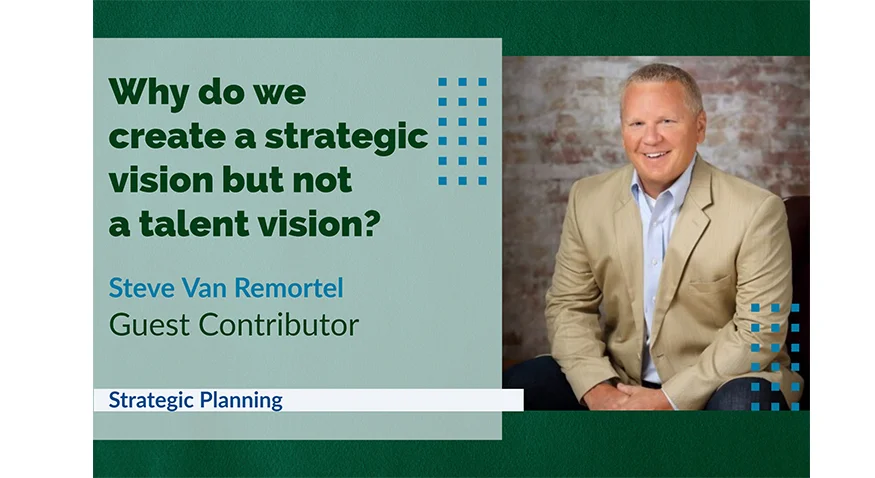
January 27, 2023
When the vision is clear, the strategy is easy.
The truth in this statement is why more and more organizations are developing a strategic vision these days.
Not a vision statement, but a vivid and descriptive target of what they want their organization to look like in three years.
It can provide clarity on the strategies, goals and action plans needed to get there.
A vision can make coming up with your strategy easier.
But why don’t we create a talent vision?
A talent vision can do the same thing – provide clarity on the talent strategies and action plans. It ensures you have the right people in the right positions to achieve your strategic vision.
It can help make coming up with a talent plan and strategies easier and, in turn, realize the full growth potential of your people and organization.
Generational math informs us that talent challenges will remain the No. 1 issue for most organizations well into the future.
As a result, you could make the argument that your talent vision is more important than your strategic vision.
However, the irony is that your strategic vision comes before your talent vision.
You can’t envision and plan for what talent you need until you first know where you are going as an organization – your strategy.
Creating a talent vision
Let’s say your company has a three-year vision to Dec. 31, 2025, that defines exactly what you want your company to look like by then.
What do you want your financials, culture, differentiation, target markets, etc. to look like in three years?
Once you have your strategic vision in place, you can then create your talent vision.
To do so, break your leadership team into two to three homework teams.
The beauty of homework teams is you get all these ideas on the table that come together to create the talent vision needed to make your strategic vision a reality.
Each homework team prepares its recommended functional structure that needs to be in place by Dec. 31, 2025, to execute your strategy and achieve your vision.
They do not use any employee names or consider the current organizational structure.
Instead, they focus on how the organization needs to be structured to achieve the strategic vision.
Then as a planning team, you start at the top of the organizational structure and work your way down to all functions in the organization to complete your talent vision.
For example, let’s say your company’s revenue was $10 million last year, and you envision it to be $20 million in your Dec. 31, 2025, vision.
What does your functional organizational structure need to look like by Dec. 31, 2025, to support a $20 million company?
Once your future, functional structure is completed, start shaping your talent vision by adding more information to the structure.
For example, define the key accountabilities/job descriptions for each role or what DiSC – D (dominance), I (influence), S (steadiness) and D (dominance) – behavioral style you want in the role.
When the vision is clear, strategy is easy.
Your talent vision can make your talent strategy/plan easier to put together.
Strategies and action plans can help create an employer-of-choice culture to attract, develop and retain the talent to achieve your strategic vision.
Steve Van Remortel is founder/CEO of MyTalentPlanner, chief strategist & talent advisor at Stop the Vanilla, LLC and is a speaker, trainer, advisor and three-time author.
 For the ‘Love’ of kids, football and giving back
For the ‘Love’ of kids, football and giving back Fostering conversations around statewide childcare crisis
Fostering conversations around statewide childcare crisis








